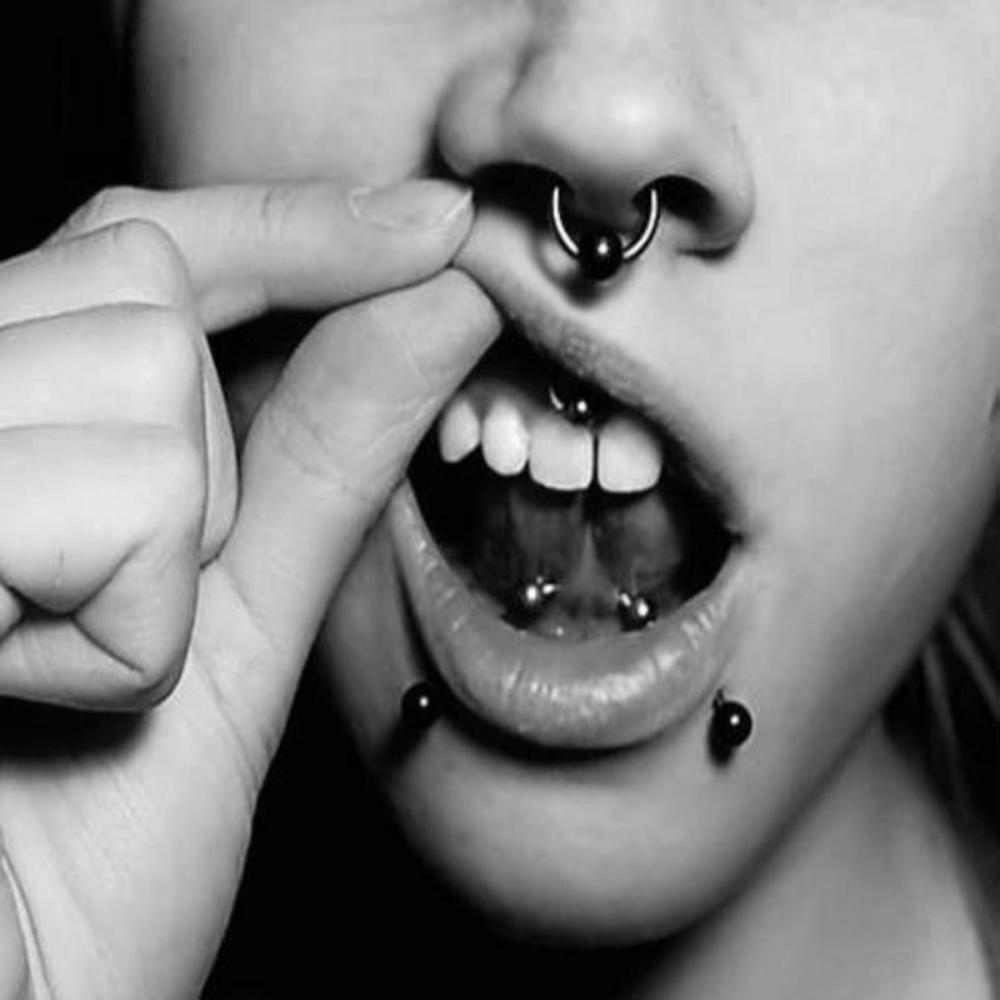
- For best healing and aesthetic results, carefully adhere to the downsizing schedule your piercer gives you for your initial jewelry.
- The three main rules for oral piercings are: maintain good oral hygiene, drink plenty of water and STOP playing with, tonguing, tapping and/or biting your jewelry.
- Be aware of the signs of piercing complications and alert Koi immediately if you begin to experience any of them.
- The cheapest jewelry can call itself hypoallergenic. Remember that is NOT the same thing as implant grade.
Oral Piercing Aftercare & Maintenance
Drink plenty of water and brush and floss daily. Keeping a normal dental hygiene is best. If you start to notice anything unusual please reach out to your piercer with the number they provide you with their business card.
After healing, check the tightness of the jewelry now and then (with clean hands) to avoid choking on, swallowing or inhaling dislodged jewelry.
When playing sports, be sure to remove oral jewelry and wear a mouthguard.
Signs of Piercing Complications
Unprofessional or poorly healed/maintained oral piercings can lead to a number of serious complications that may require medical care and/or immediate removal of the jewelry.
These include: allergic reaction or infection, abnormal skin sensations (paresthesia: tingling, pricking, chilling, burning or numbness), gingivitis/periodontitis, tooth hypersensitivity and/or mobility (loosening), “nested” jewelry (when swelling exceeds the size of the jewelry), gum recession, abrasion/fractures, misaligned teeth, plaque and over-scarring.
At Extreme we prioritize education and professionalism.
We’ll provide you with an expert piercing as well as the aftercare instruction that will help you avoid these complications.
Should you experience any of the above, please contact us immediately.
Swelling & Downsizing
Your oral piercing will be provided with jewelry that may feel extra roomy or long at first.
This is to allow for any swelling that will likely occur during healing.
Swelling varies greatly from person to person; be patient and adhere to the downsizing schedule your piercer gives you.
Several downsizes may be necessary before your piercing sits as close to the piercing site as you want it to.
After healing is complete and all swelling is gone, it is important to wear jewelry that is as short or tight as the body allows.
Failure to do so may cause gum recession, bone loss or tooth breakage.
What to avoid?
Avoid any externally threaded jewelry.
Wearing jewelry that contains nickel/silver is one of the leading reasons that the body can’t heal the piercing.
Most people are allergic to it and what can manifest as an extreme infection is often catalyzed by an allergic reaction first.
All of the jewelry at Extreme is implant grade material, and we do carry 14k solid gold options. If you have any questions please feel free to reach out.
